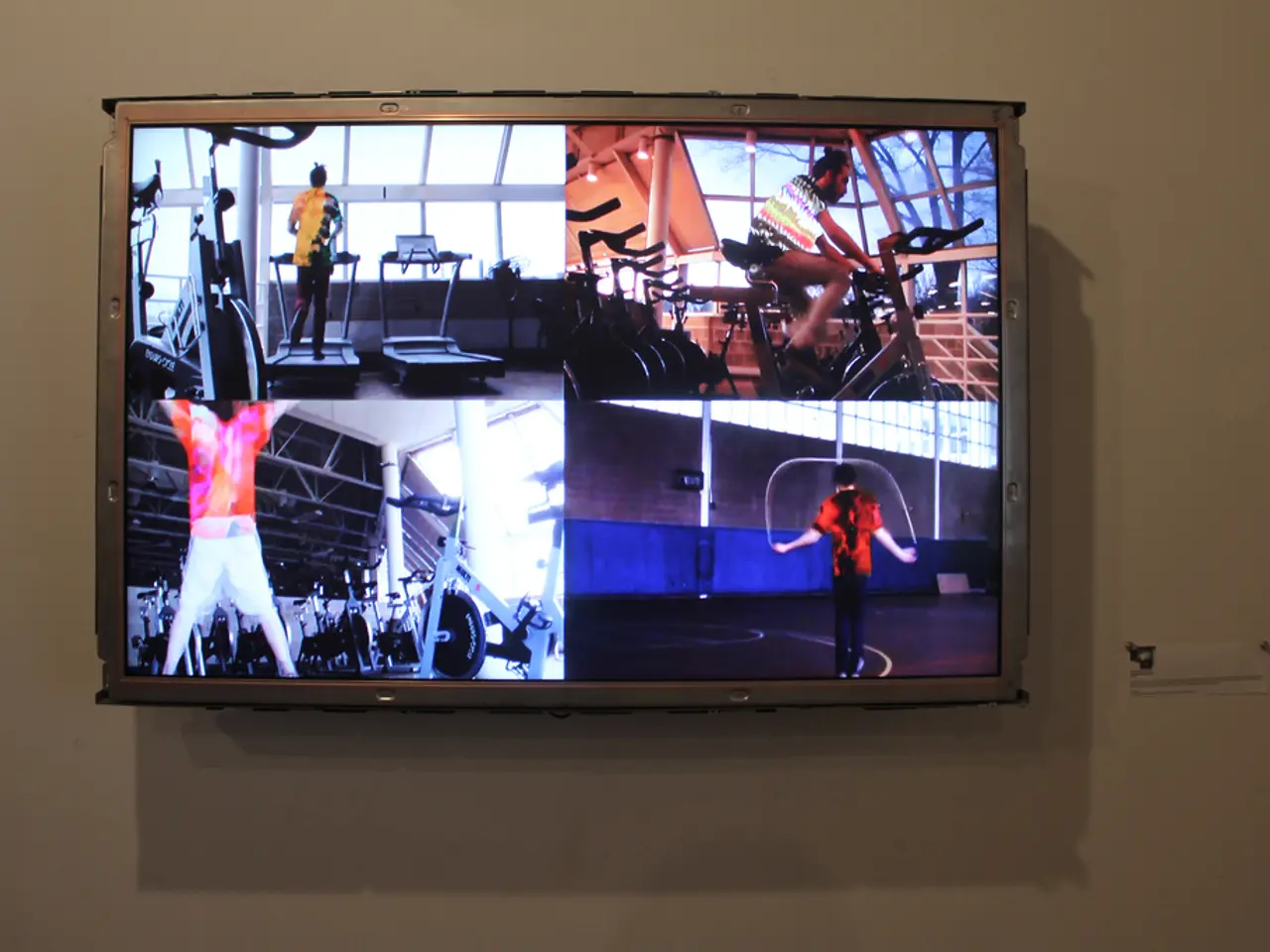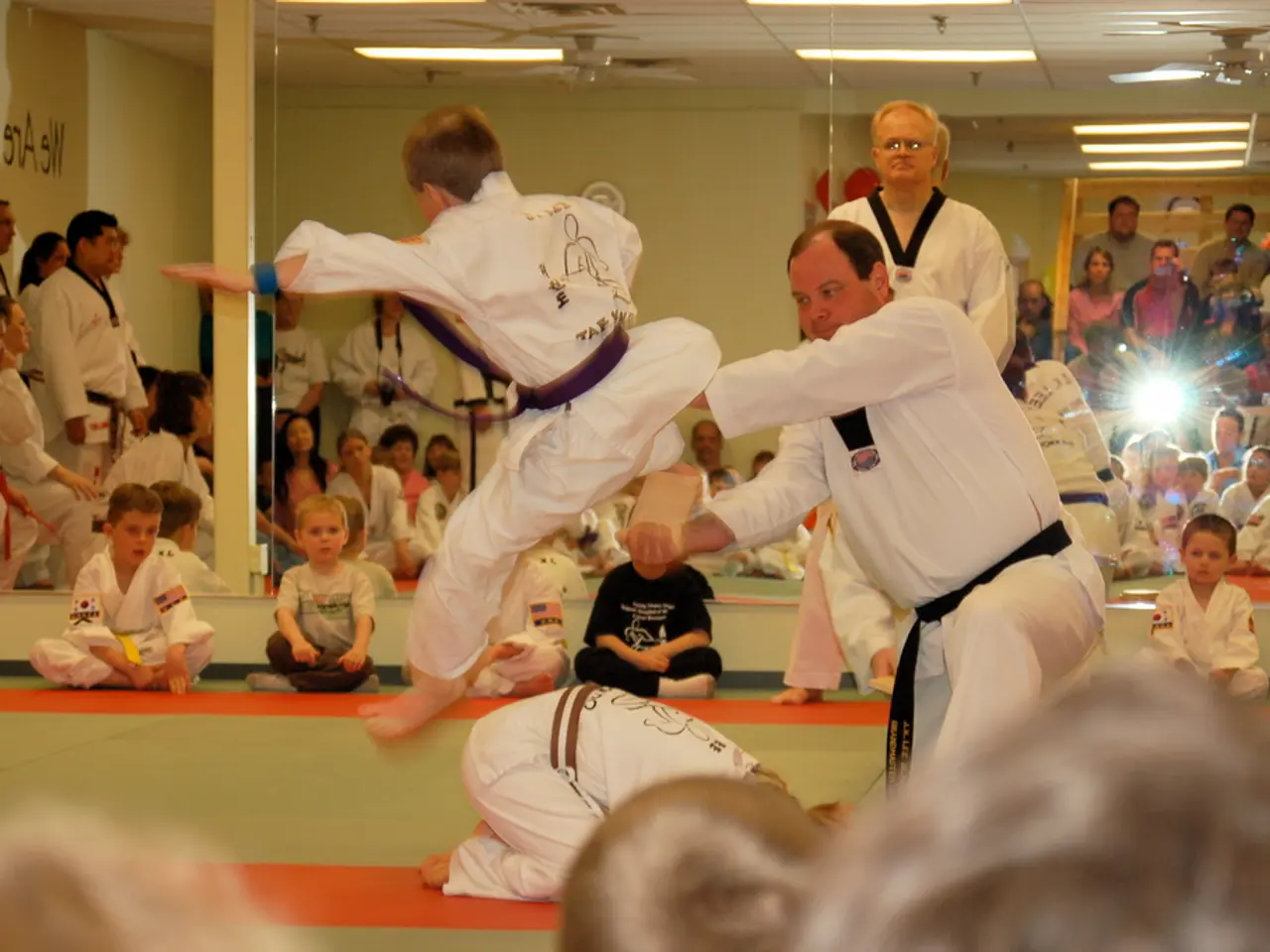Assess Your Real Fitness Level with This Easy Test, Equipment-Free Method
The 1-Minute Wall Sit Test is a straightforward and accessible fitness assessment that offers valuable insights into an individual's lower-body strength, endurance, and mental fortitude. This test, which involves sitting against a wall with knees bent at a 90-degree angle for up to a minute, targets the quadriceps, glutes, hamstrings, and calves.
The test serves multiple purposes in evaluating one's fitness level:
1. **Muscle Endurance**: The test challenges the muscles to maintain a fixed position for an extended period, providing insights into their ability to sustain contraction over time. Stronger individuals with better lower-body endurance can hold the position for longer.
2. **Mental Grit**: Holding a wall sit for a minute requires mental focus and the ability to tolerate fatigue, as the muscles are locked in place without movement. This aspect of the test evaluates both physical and mental stamina.
3. **Functional Strength**: The test measures functional strength, which is crucial for everyday activities and athletic performance. Stronger individuals will find it easier to hold the position for the full minute.
4. **Progress Tracking**: By performing the test regularly, individuals can track improvements or declines in their fitness level over time, making it a useful tool for monitoring progress and setting fitness goals.
The 1-Minute Wall Sit Test offers several benefits:
- It requires no equipment and can be done anywhere, making it a convenient and accessible fitness test. - It demonstrates the ability to manage discomfort and fatigue, key indicators of fitness. - Interval-style wall sits, such as 30 seconds on, 30 seconds off for 3 to 4 rounds, can help build endurance quickly. - Strengthening the core can help improve the ability to stay upright during wall sits.
Performance in the test can be interpreted as follows:
- 30 to 59 seconds: Indicates an average performance, with room for improvement in lower-body strength endurance. - Less than 30 seconds: Indicates below-average lower-body strength endurance and potential need for improvement. - 1 minute and 30 seconds to 2 minutes or more: Indicates excellent lower-body strength endurance and mental resilience.
Paying attention to where you feel the strain during the wall sit can indicate potential mobility issues, muscle imbalances, or weak glute muscles. Consistency and tracking progress can help notice improvements in wall sit performance and everyday tasks. Practicing wall sits weekly can help improve lower-body strength, stamina, and posture control.
In conclusion, the 1-Minute Wall Sit Test is a valuable tool for evaluating and improving lower-body strength, endurance, and mental toughness. It provides a quick, accessible, and effective means of assessing fitness levels and setting personal fitness goals.
- To further enhance your fitness and health-and-wellness, incorporating exercise routines like yoga, workout, and fitness-and-exercise regimens into your daily life could complement the 1-Minute Wall Sit Test.
- The science of fitness suggests that a combination of different types of exercises would ensure a well-rounded fitness routine, leading to overall health improvements, including weight loss.
- Regularly implementing strength training, cardio exercises, and flexibility workouts can help bolster your lower-body strength, endurance, and mental resilience that the 1-Minute Wall Sit Test evaluates.
- With a focus on fitness, health-and-wellness, and scientifically sound exercise routines, you'll not only see improvements in your wall sit performance but also in your daily life activities, overall fitness level, and weight loss goals.




